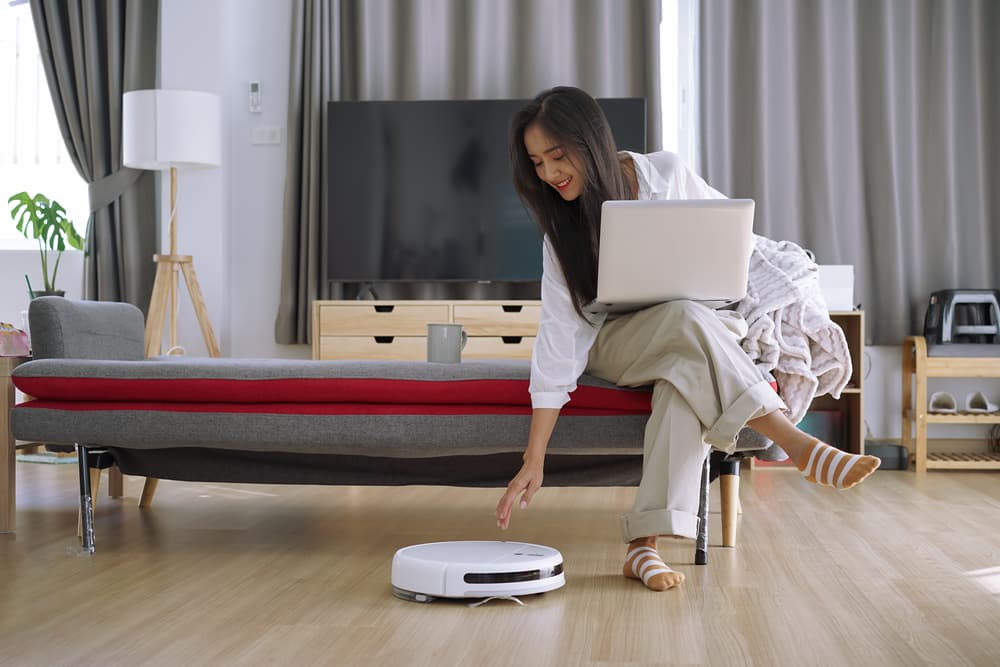
The Deebot units are pretty efficient and rarely run into issues when you’re keeping proper track of their maintenance. Even when the robot is into performance issues, you’ll be able to diagnose the problem by matching the beeping frequency with the troubleshooting guide in the manual. So, if the Deebot models like DN622 11 are beeping, you should note down the frequency of consecutive beeps and match it with the issues mentioned in the manual.
Depending upon the current situation of the Deebot DN622 11, you’ll have to check a variety of components, from the dustbin to the main brushes on the cleaning robot. So, here are some troubleshooting steps that can help you get the Deebot DN622 11 working again.
Why Is Deebot DN622 11 Beeping?
- Try Charging the Deebot DN622 11
If the DN622 11 stops randomly and starts beeping around five times, then you need to check the battery levels. This issue usually presents itself when the charging station is not getting optimal power. So, make sure to change the outlet and then manually put the Deebot on the charging station. Let it charge completely, and then start the cleaning cycle once.
This time around, you won’t have to deal with the beeping sound, and the cleaning robot will complete the operating cycle before the battery runs out. So, make sure to start troubleshooting beeping issues by charging the Deebot.
- Remove Tangled Hair Driving Wheels
When you ignore the maintenance of the Deebot for too long, it will run into problems with debris and hair getting tangled around the driving wheels. This restricts the movement of the Deebot, and you will have to remove the tangled hair from the Driving wheels if the Deebot DN62 11 is beeping.
Make sure that nothing is lodged behind the driving wheels, and then start the cleaning cycle again. If the battery is in good shape, cleaning the Deebot should do the trick. So, remove all fur and hair from the bottom of your Deebot.
- Free Up the Dust Bin
The situation of the dust bin can also create beeping problems with the Deebot DN622 11. It is recommended for users to clean out the dust bin once every day. However, if you ignore this step for too long, the performance of your Deebot DN622 11 will reduce by a significant margin. So, if you’ve not cleaned the dust bin in a while, now is a good time to do so. Make sure that nothing is blocking the compartment, and then start the Deebot after the dust bin is in good shape.
- Check the Condition Of Cleaning Brushes
Along with the driving wheels, cleaning brushes can also get entangled with long strands of hair. When these brushes are unable to move freely, your Deebot will stop working, and you’ll hear beeping noise coming from the unit. So, you need to service the unit immediately and then check the condition of the motor. Make sure that the band connecting the brushes and the motor is in good shape, and then start your Deebot for the cleaning cycle.
- Power Cycle Deebot DN62 11
Power Cycling Deebot DN62 11 is fairly simple and has a decent chance of removing programming-related bugs from the unit. So, turn off your Deebot for a few minutes and then turn it back on. If you’re sure that no hair or fur is entangled beneath the cleaning robot, then you won’t have to worry about a thing after this point. Many users were able to fix minor programming-related issues by following this method, and restarting the Deebot will help you get the unit working again.
- Reset Deebot DN62 11
Resetting the Deebot DN62 11 is not an ideal fix and removes all the maps and configurations from the unit. So, you’ll have to start everything from scratch and then map the whole apartment to get the Deebot in working condition.
However, if the beeping issue doesn’t get fixed even after cleaning the robot and power cycling the unit, then resetting the unit is your only option. On the other hand, you can also reach out to the ECOVACS customer support and have the customer support professionals help you with the troubleshooting steps.